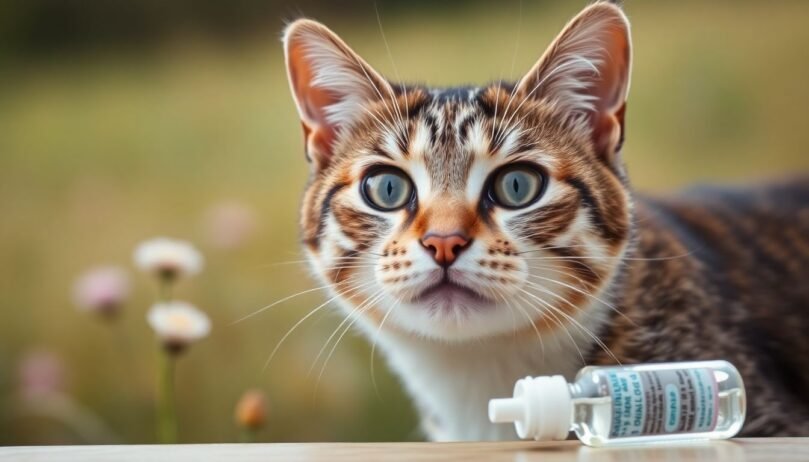Can You Use Dog Flea Control on a Cat?
- 11 March 2025
- BuyAPet Editorial Team
- All Cats, Cat Health
Can You Use Dog Flea Control on a Cat? What You Need to Know
Picture this: you spot a flea on your cat and reach for your dog’s treatment. Stop. The answer is no—using dog flea control on cats can be seriously dangerous and even fatal. Here’s why, what to use instead, and what to do if a mistake happens.
Why Dog Flea Control Is Harmful to Cats
Physiological differences
Cats and dogs metabolise medications differently. A drug a dog’s liver enzymes handle safely can overwhelm a cat’s system, leading to toxin buildup.
Common toxic ingredients in dog products
- Permethrin (a synthetic pyrethroid) — safe for dogs in certain doses, highly toxic to cats.
- Other pyrethroids (e.g., cypermethrin) and some amitraz dog products can also be dangerous for cats.
Key point: Even contact transfer from a recently treated dog can poison a cat. Keep species apart per product guidance (often 24–48 hours).
Potential Health Risks & Symptoms
| Category | What you might see | What it means |
|---|---|---|
| Neurological | Tremors, twitching, incoordination, seizures, agitation | Nervous system toxicity—urgent veterinary care needed |
| Gastrointestinal | Drooling, vomiting, diarrhoea, loss of appetite | Irritation or systemic effects |
| Respiratory / skin | Fast breathing, weakness, skin redness at application site | Systemic involvement or local irritation |
If any of these occur after exposure, contact a vet immediately.
Safe Flea Control Options for Cats
Veterinary-approved treatments
Your vet can prescribe or recommend cat-specific spot-ons, orals, or collars with proven safety for felines and the right dose for weight/age.
Natural methods (use caution)
- Flea combing daily to remove adults/eggs; dip the comb in soapy water.
- Environment control: wash bedding hot, vacuum carpets/soft furnishings, treat the home per vet advice.
- Be careful with essential oils: many (tea tree, eucalyptus, peppermint, etc.) are toxic to cats—don’t use unless your vet confirms safety.
What If Dog Flea Control Was Applied to a Cat?
Immediate first aid (don’t delay)
- Topical/spot-on exposure: Bathe the cat promptly with mild dish soap and lukewarm water; rinse well. Keep them warm and calm.
- Oral ingestion or severe signs: Do not induce vomiting unless a vet instructs you.
Next step: Contact your veterinarian immediately and tell them the product name, strength, and when it was applied. Fast care can be lifesaving.
Multi-pet households
- After treating a dog with a dog-only product (e.g., permethrin spot-on), separate from cats for 24–48 hours or as labelled.
- Prevent grooming contact and shared bedding during that window.
Preventing Future Mistakes
Read labels carefully
- Use products that explicitly state “for cats”.
- Check active ingredients and dose by weight.
- When in doubt, ask your vet before applying.
Store & apply safely
- Keep dog and cat products separate and out of reach.
- Follow application instructions exactly; set reminders for monthly dosing.
- Log product name, batch, and date in case you need to report it.
Conclusion
Using dog flea control on cats is not safe. Choose feline-specific products, manage the home environment, and involve your vet for a plan that works. If an exposure happens, act quickly—wash, separate, and call your vet. Please share this with other pet owners to help prevent accidental poisonings.
Medical disclaimer: This article is educational and not a substitute for professional veterinary advice. Always follow your veterinarian’s recommendations for your individual pet.
